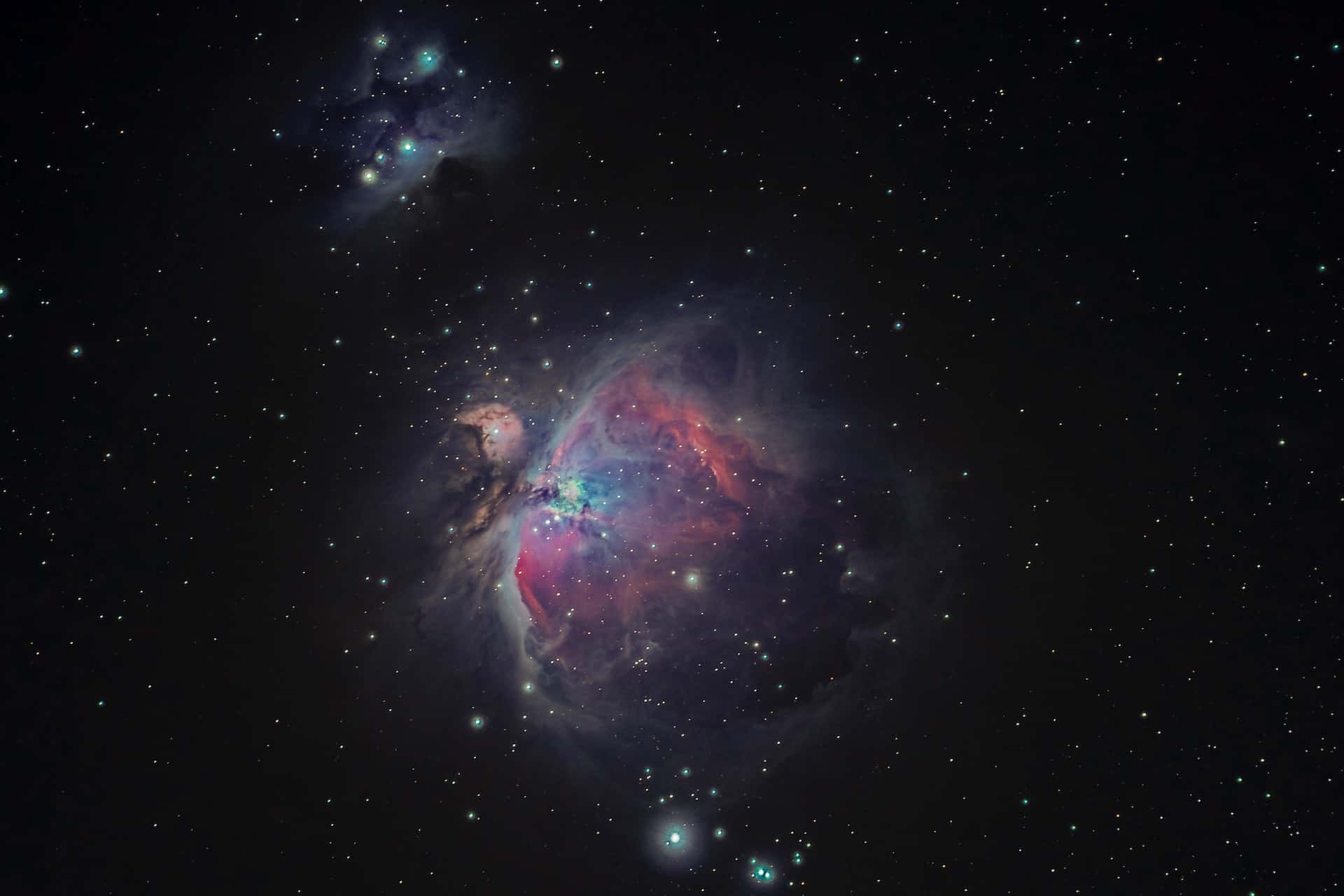



Revolutionized is reader-supported. When you buy through links on our site, we may earn an affiliate commision. Learn more here.
Much of what scientists understand about the universe is based on observations of the Milky Way Galaxy. It’s the one humanity calls home, but it doesn’t contain everything that might exist in the universe. The Milky Way is a barred spiral galaxy, spinning away in the darkness, but that isn’t the only type of galaxy astronomers have identified. Follow along for some incredible facts about elliptical galaxies.
Other types of galaxies have iconic shapes that make them easy to identify. Spiral galaxies spin and often have arms. Irregular galaxies don’t have any defined form, but they are rare and difficult to spot. By their nature, elliptical galaxies don’t have any true defining characteristics. They are massive and largely featureless, which makes them challenging to identify.
Edwin Hubble grouped galaxies into four primary categories — spiral, barred spiral, elliptical and irregular. This list has been expanded over the years by astronomers such as Gerard Vaucoulers and Allan Sandage to include a variety of intermediate pirates as well as lenticular galaxies.
One of the most exciting facts about elliptical galaxies is that they don’t have one distinct shape. They fall into one of seven categories — designated E0 through E7 — depending on their size and form. This shape can range anywhere from perfectly round to a stretched elliptical outline.
Astronomers can’t identify elliptical galaxies by size alone. They can range anywhere from celestial bodies less than one-tenth the size of the Milky Way to some of the largest galaxies in the known universe. On the small side of the heavenly coin, there are dwarf elliptical galaxies.
On the other side, there are massive celestial structures. M87 is one of those structures. Classified as an E0 elliptical — meaning it’s nearly perfectly round — M87 has an estimated diameter of 132,000 light years. That’s more than double the size of the Milky Way.
One of the not-so-fun facts about elliptical galaxies is that they take over anything smaller than themselves — a term astronomers lovingly call galactic cannibalism. Because they exist primarily in clusters, they often cannibalize each other when their gravitational fields merge.
Despite their size and prevalence, elliptical galaxies are among some of the most challenging galaxies to spot. Their lack of identifying features makes it easy to look right through them or past them.
Astronomers have identified more spiral galaxies than any other type, but that is only because their identifying features make them easier to pick out when staring at endless stretches of black sky. We’re not here to talk about spiral galaxies, though, not when there are so many fascinating facts about elliptical galaxies to explore.
How are elliptical galaxies formed? Astronomers were asking themselves the same question, so they set out to find an answer. They don’t know how elliptical galaxies form, but the prevailing theory is that they form when two individual galaxies come into direct contact.
Galaxy clusters form when multiple galaxies are close enough to each other that their gravitational fields start to meld. Sometimes, those galaxies collide. Astronomers theorize this sort of collision is what gives birth to elliptical galaxies.
One of the more relevant fun facts about elliptical galaxies is that they’ll one day take over humanity’s home. The Milky Way Galaxy may become an elliptical galaxy in the distant future — it’s on track to collide with the Andromeda Galaxy.
Don’t worry about that darkening the days anytime soon. It will likely be billions of years before the two galaxies fully collide. Astronomers estimate the merger of the two galaxies has already begun, but it will be 5 billion years before it becomes an elliptical galaxy.
Spiral galaxies — in addition to their spiral shape and arms — are identified by a bulge in their center. That bulge is caused by a supermassive black hole that consumes anything close enough to get caught in its gravity well.
One of the fun facts about elliptical galaxies is that those supermassive black holes don’t just disappear when two spiral galaxies collide to form an elliptical one. The black holes are just as greedy and their consumption of all the gas and dust they can get their hands on may explain why elliptical galaxies don’t have as many new stars as spirals do.
The James Webb Space Telescope allows astronomers to watch this merger and its real-time impact on the black holes. One of the first images JWST astronomers released was of Stephen’s Quintet, a cluster of five galaxies. Two galaxies are in the first stages of merging to form an elliptical galaxy eventually. A third — featured at the top of the cluster in the released images — has an active supermassive black hole at its core releasing more energy than 40 billion suns.
Astronomers find it easy to spot spiral galaxies because they’re so bright. These celestial bodies are filled with gas and dust particles that give birth to new stars that will be around for billions of years, sparkling in the darkness for astronomers to spot.
Elliptical galaxies aren’t nearly as bright as spiral galaxies. They have much less gas, so they form fewer new stars. This may be due to the supermassive black holes mentioned in the previous intriguing facts about elliptical galaxies.
As a result, the stars still exist inside an elliptical galaxy and are often nearing the end of their life cycle. They’ve already been burning for billions of years and slowly, they will begin to fade, taking their light with them.
One of the more exciting facts about elliptical galaxies is that most of them are incredibly old. Most estimates put them between 7 – 10 billion years, which is almost as old as the universe itself. Astronomers believe the Big Bang happened 13.8 billion years ago, give or take a few hundred million years.
Despite the fact that some new studies think the universe could be twice as old, elliptical galaxies still house some of the oldest stars out of any other kind of galaxy. Usually, their stars appear red or yellow because they’re close to the end of their life cycle.
Stars can appear blue, white, yellow or red. The hottest ones are 72,000°F (40,000°C) and look blue. Most elliptical galaxies’ stars are only 5,400°F (3,000°C) — just about the coldest they can get before running out of fuel and disappearing from the night sky.
Because of their often destructive origins, elliptical galaxies are most often found within galaxy clusters. It’s easier for spiral galaxies to collide and give birth to ellipticals when there is already a group close together. Or as close as they can be, considering how much space exists out there.
Elliptical galaxies can form outside these clusters, but the chances two stray galaxies will collide are much lower in open space. Astronomers believed elliptical galaxies were the first stage in a galaxy’s life cycle. As their understanding of the universe has evolved, so has their knowledge of galaxies. Instead of being the beginning of a galaxy’s story, elliptical galaxies represent the end of a galactic life cycle.
In elliptical galaxies, stars don’t move in any set pattern. They don’t rotate around the center of gravity in a repeating loop like the celestial bodies in spiral galaxies do. Instead, they drift in random directions around the core.
Astronomers believe stars move chaotically instead of rotating in a uniform pattern because of how an elliptical forms. The theory that elliptical galaxies form after two separate galaxies collide explains why everything orbits the core in random directions.
How are elliptical galaxies formed when two galaxies collide? Their gravitational pulls take millions of years to bring them closer together. A merger is relatively rare because of this. The universe is also unimaginably vast, so the chance of two celestial objects running into each other is low.
Still, astronomers are certain many collisions are happening right now. They believe up to 25% of galaxies are currently colliding with each other. In a few million years, there will be a massive amount of new elliptical galaxies.
Centaurus A is the fifth-brightest galaxy in the Earth’s night sky. It’s over 12 million light-years away but still visible to people in the southern hemisphere. Spiral galaxies make up most of the other brightest ones because they’re easier to spot.
Elliptical galaxies aren’t very bright because they contain older, dying stars. They’re also more uncommon than spiral galaxies. Elliptical galaxies like Centaurus A are unique because they’re close enough and light enough to spot.
Humans are far from visiting another galaxy, though the Andromeda galaxy is inching closer by the year. Current human space travel technology couldn’t carry astronauts there even under the best circumstances, but that doesn’t mean scientists should stop dreaming.
There is so much out in the universe they haven’t begun to understand, but they are learning. Elliptical galaxies are just one piece of the ever-growing galactic puzzle, but that one piece gets humanity a little closer to better understanding the universe everyone calls home.
This article was originally published on 12/07/22. It was updated on 03/07/24 to include updated information.
Revolutionized is reader-supported. When you buy through links on our site, we may earn an affiliate commision. Learn more here.


This site uses Akismet to reduce spam. Learn how your comment data is processed.